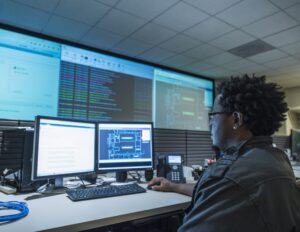A few weeks ago I had the pleasure of attending the inaugural Internet of Things World Forum in Barcelona, an event hosted by Cisco and sponsored by 16 of its partners, including Schneider Electric. I came away thoroughly impressed with the opportunities the IoT presents and convinced it’ll take lots and lots of partnerships to see those opportunities realized.
The event included keynote speeches by Cisco CEO John Chambers as well as Wim Elfrink, Cisco EVP and Globalization Officer. I’ve seen Chambers speak several times but he was more enthusiastic in this talk than I’ve seen him in many years. Clearly he believes it when he says the IoT represents another big inflection point for the industry, not unlike the Internet presented a couple of decades ago.
He also tossed around some impressive stats, noting that in 2010 we had more than 10 billion devices connected to the Internet while in 2013 the number of mobile devices people carry exceeded the number of people – meaning many folks had more than one. (Check out his slide deck here.) Probably you can relate to that. But most staggering is that by 2020 Cisco expects more than 50 billion devices will be connected, and perhaps as many as 500 billion.
But we’re not talking solely iPads and smart phones here. By “devices” we mean anything that can collect and send data – sensors, video cameras and the like.
There will be big value in all those devices and the data they send, Chambers argued –$14.4 trillion, in fact, spread across vertical industries including manufacturing, retail, finance, healthcare, and oil and gas.
Where does that value come from? In a word, applications. It will take lots and lots of applications to make sense of all this data and to extract value from it. Chambers calls it the “application economy” and it’s an apt term when you consider the scale of what’s happening. Already there are 1.25 million apps worldwide that run on Google and/or Apple devices, Elfrink said (see his deck here). To look at it another way, he said worldwide each week we see 100 movies and 250 books released, but 15,000 apps. That’s a staggering number. (And I never would’ve guessed the number of movies was that high.)
To bring all of this home, on the last morning of the event attendees were invited on a smart city walking tour. I was a bit bleary eyed at this point, having stayed up very late to watch my Red Sox win the World Series (but I’m not complaining!), yet was thoroughly impressed at what is happening in Barcelona.
One example was the smart bus stop. Imagine a standard bus stop with a three-sided glass shelter. On one wall is a big digital display with red and white LED lights, showing when the next bus is coming, and the one after that. Built into another side is a massive touch screen that people can use to find out things like how many bicycles are available at the next bus stop or what connections are available from another stop to wherever they want to go. Net result? More people are taking buses. If you give people the right information, it can change their behavior.
We also saw a smart parking demonstration, smart street lighting and smart waste bins. Yes, waste bins that can communicate when they’re full – no more sending trucks out to collect from bins that don’t need to be emptied. That means more efficient routing of trucks, less congestion on the roads and lower costs.
Schneider Electric, of course, is heavily involved in leveraging the IoT. Our CTO, Pascal Brosset, also spoke at the event and talked about the opportunity in “pervasive sensing,” where you can put a sensor on just about anything to monitor and control it. (See a video of his presentation here [registration required] and his slide deck here.) This is a good example of where it will take partnerships between the folks who make the sensors (like Schneider Electric), those who can communicate the data (Cisco, as mentioned in this previous post by my colleague Tony DeSpirito) and those who can make sense of it, including IBM as in the video example I mentioned previously as well as Schneider Electric with our various apps for monitoring data centers and mining operations (see this post by Fabio Mielli). Those are just two examples; there are lots more.
Consider a large building campus that may have 1 million points of data collection. After a year, maybe 5% of those points would be out of sync. Clearly, it’ll take constant attention to keep everything working correctly, but we’ll need intelligent applications to tell us which ones to attend to first. To try to tackle the problem, we shared some data with some students at MIT and they developed analytics that address the issue. The students wound up launching a startup firm called KGS, which is now a Schneider Electric partner.
I could go on but I expect this is a topic I’ll be coming back to frequently over the next several years as we continue to work with our partners to extract value from the IoT. We’ll do our part to get to that $14.4 trillion figure.



